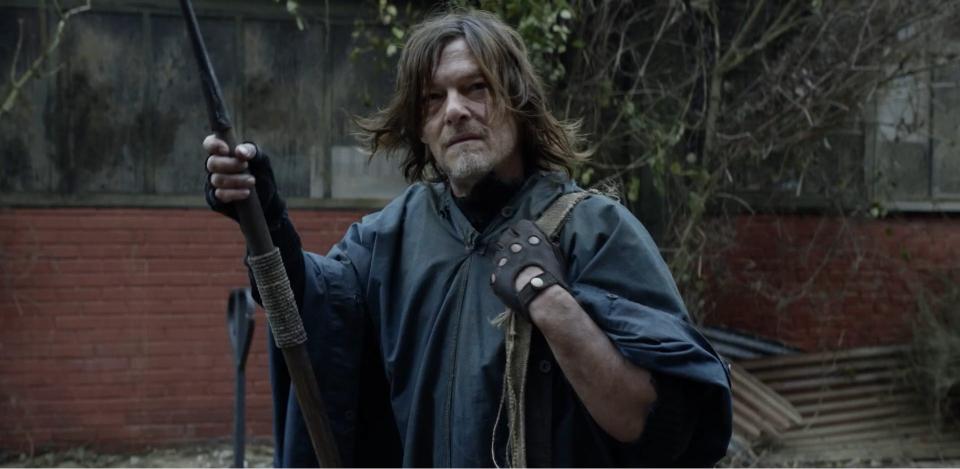“Brain on Fire,” a medical drama film directed by Gerard Barrett, centres on Susannah Cahalan, a writer who exhibits odd behaviour and violent outbursts all of a sudden. She is classified as psychotic, bipolar, and even schizophrenia, despite the fact that physicians are unable to provide a specific diagnosis for her illness. Cahalan eventually finds a neurologist who can relate to her condition as her symptoms worsen and her health worsens.
Chloë Grace Moretz, Navid Negahban, and Thomas Mann feature in the 2016 film, which is an intense rollercoaster that highlights Cahalan’s unwavering quest for a diagnosis and the fortitude needed to triumph over an illness that defies comprehension. The compelling narrative draws the viewer fully into the story and makes them question if the movie is based on a genuine story.
Brain on Fire is Based on an Autobiography
The movie is based on the autobiography of real-life writer Susannah Cahalan, whose 2012 New York Times best-selling book “Brain on Fire: My Month of Madness” served as its inspiration. The film captures the unvarnished and startling truths of the writer’s personal experiences. Cahalan had the perfect life in 2009, with a loving boyfriend and a great career at The New York Post. However, her life took an unexpected turn when she started suffering a bewildering range of symptoms one day. What appeared to be a typical virus quickly developed into severe cognitive and behavioural abnormalities, seizures, and hallucinations.
View this post on Instagram
Cahalan’s condition quickly declined over the following few weeks, and there were reports that her behaviour became more unpredictable. She was given incorrect diagnoses for a number of mental diseases at this time. A mental health practitioner diagnosed her with bipolar disorder, another with schizophrenia, and still another said she was experiencing alcohol withdrawal syndrome. Everything was done so clumsily. “Well, maybe it’s this,” all of these folks said. Here is some medication as well. Then another person would comment, “Well, perhaps it’s this.” And give me some more medicine. In an interview with The Guardian, Cahalan noted that “nobody seemed to know anything.”
“And these are not just Joe Schmoe doctors; these are top, top doctors,” she continued. Her condition continued to deteriorate after the incorrect diagnosis, and when her symptoms became potentially fatal, she was finally brought to the hospital. Cahalan’s condition remained unknown for a while. Her life was in jeopardy, and her symptoms perplexed her family and medical team. Following a month-long hospital stay, the writer descended into a catatonic state, kicking and striking everybody in her vicinity. She spent $1 million on her hospital bill, yet no one could definitively diagnose her condition. Dr. Souhel Najjar took up her case at this point.
The real-life Syrian-American neurologist, played by actor Navid Negahban in the movie, specialises in encephalopathy. As depicted in the movie, Dr. Najjar requested Cahalan to draw a clock, with just the right half drawn, as part of a mental examination. The physician concluded that she had inflammation on the right side of her brain. The physician took a seat next to me on the bed. “Her brain is on fire,” he added, turning to face my parents. I will exert every effort on your behalf. He would tell me later that I seemed to come alive for a second. Cahalan told The Guardian, “I’ll always regret that I remember nothing of this crucial scene, one of the most important moments of my life.”
The author’s rare autoimmune disease, Anti-NMDA Receptor Encephalitis, which causes the immune system to attack the NMDA receptors in the brain, was finally identified after a brain biopsy. Numerous neurological and psychological symptoms, such as loss of consciousness, hallucinations, memory loss, speech problems, and seizures, are brought on by this illness. After receiving the right diagnosis, Cahalan had extensive treatment that included immunotherapy and the excision of a tumour known as a teratoma from her body, which was thought to be the cause of the immunological reaction. She started to get better gradually and was headed towards recovery.
When anti-NMDA receptor encephalitis was originally identified in 2007, Cahalan was among the initial few hundred patients to receive a diagnosis. Prior to her case becoming widely known, the condition was very unknown. The author decided to help more people understand the symptoms and receive the right therapy after fully recovering. Her memoir, which she started writing, was published in 2012. The rights to her book’s cinematic adaptation were sold to Charlize Theron two years later, in 2014, and she went on to co-produce the movie. The rare condition’s knowledge, diagnosis, and treatment have advanced as a result of Cahalan’s narrative. It is said that thousands of patients have received accurate diagnoses of the illness since the publication of her memoir. In conclusion, “Brain on Fire” is based on a true story that details Susannah Cahalan’s actual battle with anti-NMDA receptor encephalitis and her ongoing misdiagnosis. The author’s experience has been portrayed in film, which has contributed to increasing awareness of the uncommon illness that affects many individuals worldwide.

